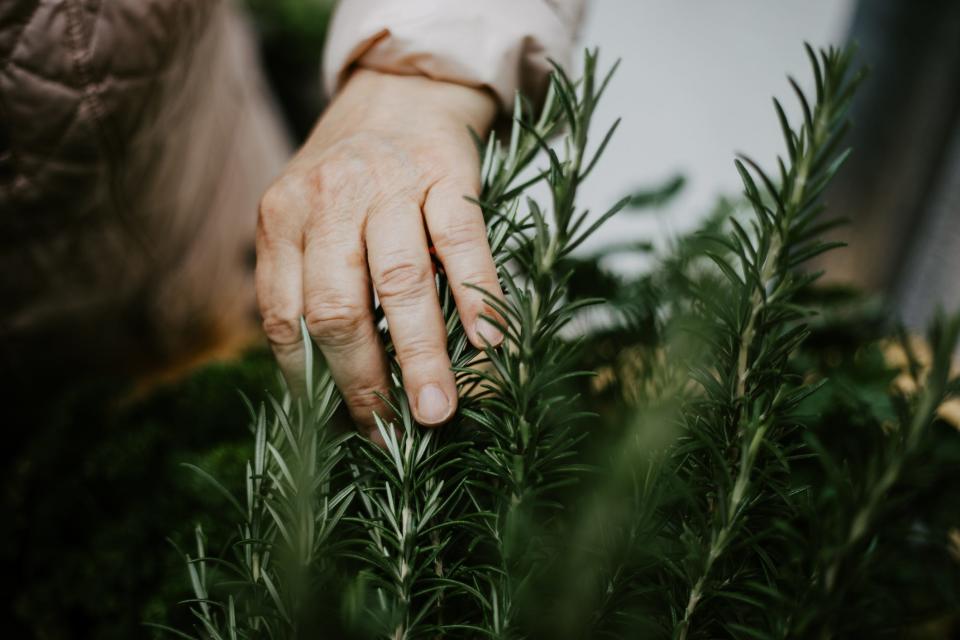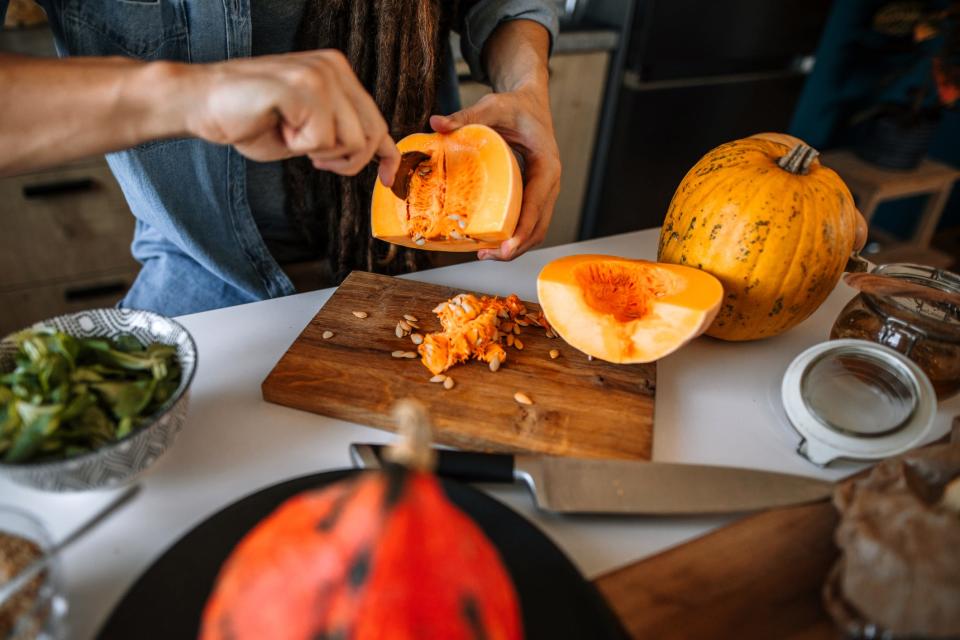7 longevity-boosting foods from Blue Zones to add to your shopping list
Blue Zones, where an unusual number of people live to be 100, have healthy eating habits in common.
Simple, accessible foods such as beans and nuts are longevity powerhouses, research suggests.
Ingredients including herbs, olive oil, and even honey add flavor along with health benefits.
The best foods for longevity are just a quick grocery trip away.
Many of the longest-living people on earth have healthy habits in common, including a mostly whole-foods, plant-based diet with a lot of carbs, healthy fats, and fiber.
From regions in Japan to Costa Rica to Italy, people have the highest rates in the world of living to 100 (or even older) in areas known as Blue Zones.
And it's not hard to incorporate Blue Zone foods into your life, according to Dan Buettner, the author whose new book and Netflix docuseries explore what we can learn from SuperAgers across the world about how to live a long, healthy life.
They rarely rely on exotic or expensive ingredients to eat healthfully. Most of the staples in Blue Zone diets are simple, accessible foods such as beans, greens, and herbs you can likely find at the grocery store.
Olive oil is a renowned health food for good reason
It's no secret that olive oil is a cooking essential in the traditional Mediterranean diet, which is found in Blue Zones including Sardinia, Italy, and Ikaria, Greece.
Olive oil is a versatile ingredient for salads, sauces, or simple recipes such as sauteed veggies. Regardless of where it shows up in a meal, it's full of an important type of fat known as unsaturated fatty acids, which can help balance cholesterol levels, as well as antioxidants linked to lower risk of many diseases, including some cancers.
The health benefits of olive oil are also related to what it may replace in your diet, since research suggests that swapping out butter or processed fat for olive oil is linked to better heart health.
Herbs add a boost of micronutrients
A crucial element of Blue Zone cuisines is making plant-based food delicious with inventive and artful use of spices and herbs. They provide plant-based nutrients called antioxidants, which have disease-fighting properties.
Part of the allure of herbs and spices is that they make food enjoyable without the use of processed additives, such as sugar, salt, fat, and artificial flavorings.
Herbs also show up in Blue Zones in the form of homemade teas, often from plants grown in the garden, including rosemary, sage, and common mallow.

Honey is a more nutritious way to enjoy sweets
Too much sugar can be bad for your health. It's also a major ingredient in ultraprocessed foods, which are linked to higher risk of cancer, heart disease, and other illnesses.
But Blue Zone residents can live to 100 without sacrificing sweetness, partly because they make eating raw honey a healthy habit.
Enjoying a bit of unprocessed honey — either by the spoonful or in an herbal tea — provides antioxidants and can help reduce cholesterol, research suggests.
Nuts are packed with fiber, healthy fat, and protein
Blue Zone diets also don't have to forego snacks, but you're not likely to see centenarians reaching for a bag of potato chips.
Nuts and seeds are a go-to food worldwide, from pistachios in Costa Rica to almonds in Italy and Greece, or the wide variety enjoyed in the Blue Zone of Loma Linda, California.
They're a good source of essential minerals and unsaturated fats, as well as some plant-based protein. Nuts and seeds are also high in fiber, important for a healthy gut and metabolism.
A modeling study found that people who eat nuts along with other Blue Zone foods, such as beans, could add up to a decade to their lifespan.
Beans are a humble 'superfood'
If there's one food that reigns supreme in Blue Zones, it's beans. They show up worldwide in dishes such as highly nutritious tofu in Okinawa, Japan, and minestrone soup in Ikaria.
Cheap, accessible, and versatile, beans of all kinds contain complex carbohydrates and fiber that can help anchor a meal to keep you full and provide balanced energy.
They are also a great source of plant-based protein.
Starchy fruits and veggies provide complex carbs for energy
While leafy greens are crucial veggies in Blue Zone cooking, many cuisines also heavily rely on carb-rich foods including potatoes and squash.
For instance, purple sweet potatoes from Okinawa are full of vitamins and minerals, and were a crucial healthy food in the region when other sources of nourishment were hard to find.
In Nicoya, Costa Rica, the traditional diet incorporates squash alongside corn and beans, commonly known as the "three sisters" and grown and prepared together. The combination provides all the essential amino acids to form a complete protein.

Wine may be a heart-healthy indulgence in moderation
It turns out that a light happy hour could be good for your health, since wine is a popular drink in Blue Zones such as Ikaria.
The key to reaping the health benefits of wine is being mindful of how much you consume, since extensive research has found that the risky side effects of alcohol skyrocket the more you drink.
It's worth noting that if you don't already enjoy wine, experts suggest you may want to avoid the habit entirely, since some research indicates there is no safe amount of alcohol.
However, in the right context, such as a high-quality wine paired with a good meal, it may offer some nutritional benefits and help you relax and socialize, both of which are definitely part of the Blue Zone lifestyle.
Read the original article on Insider

